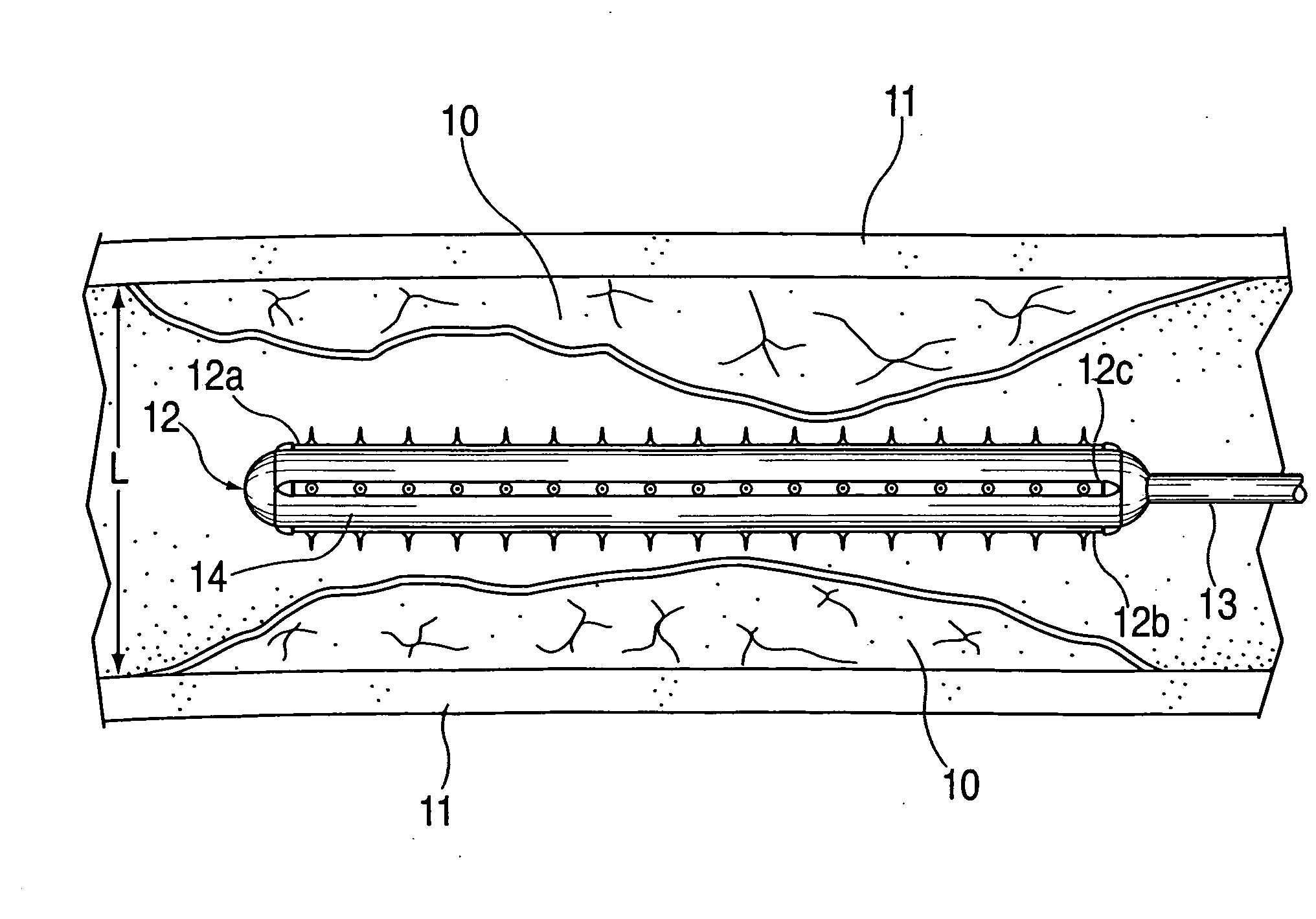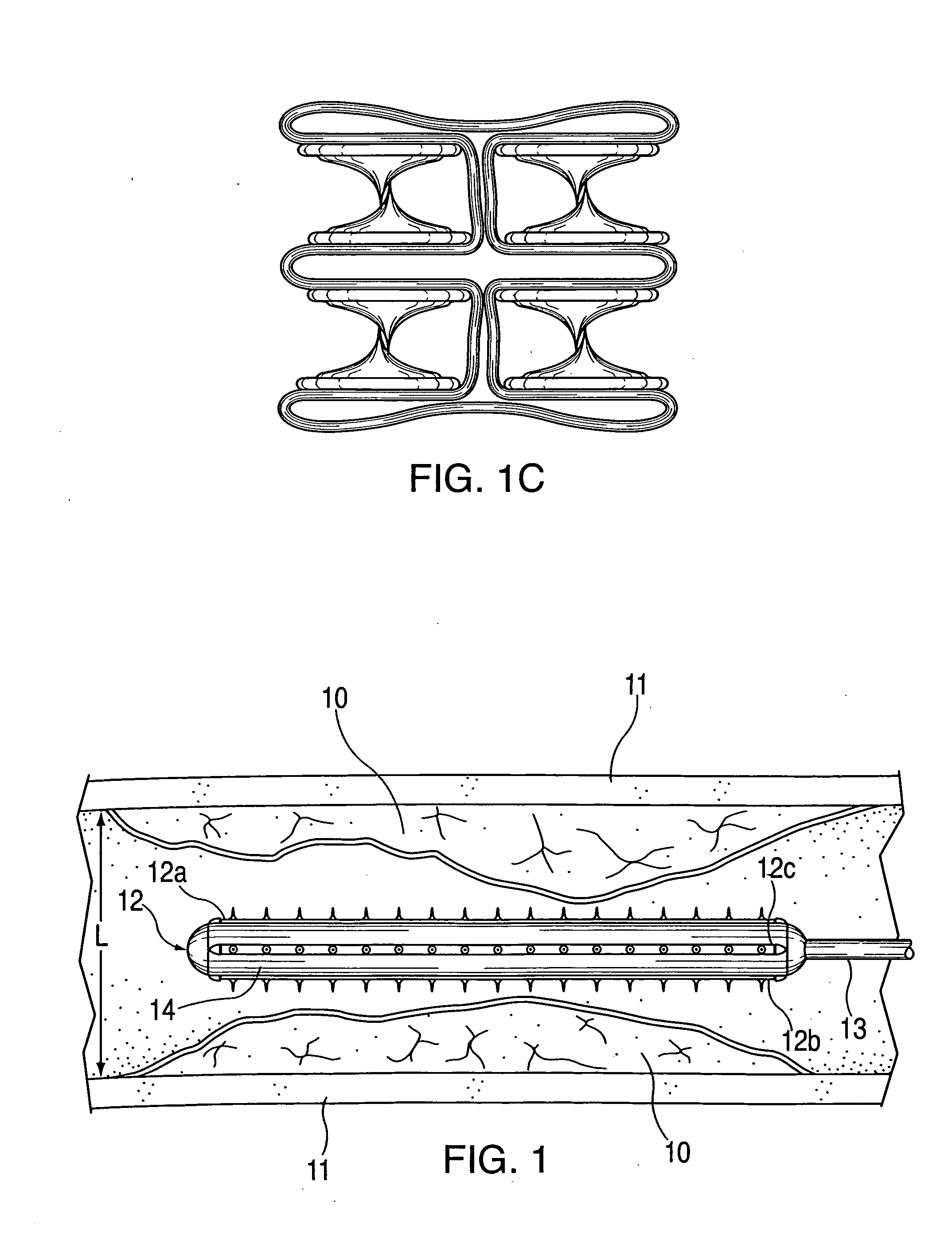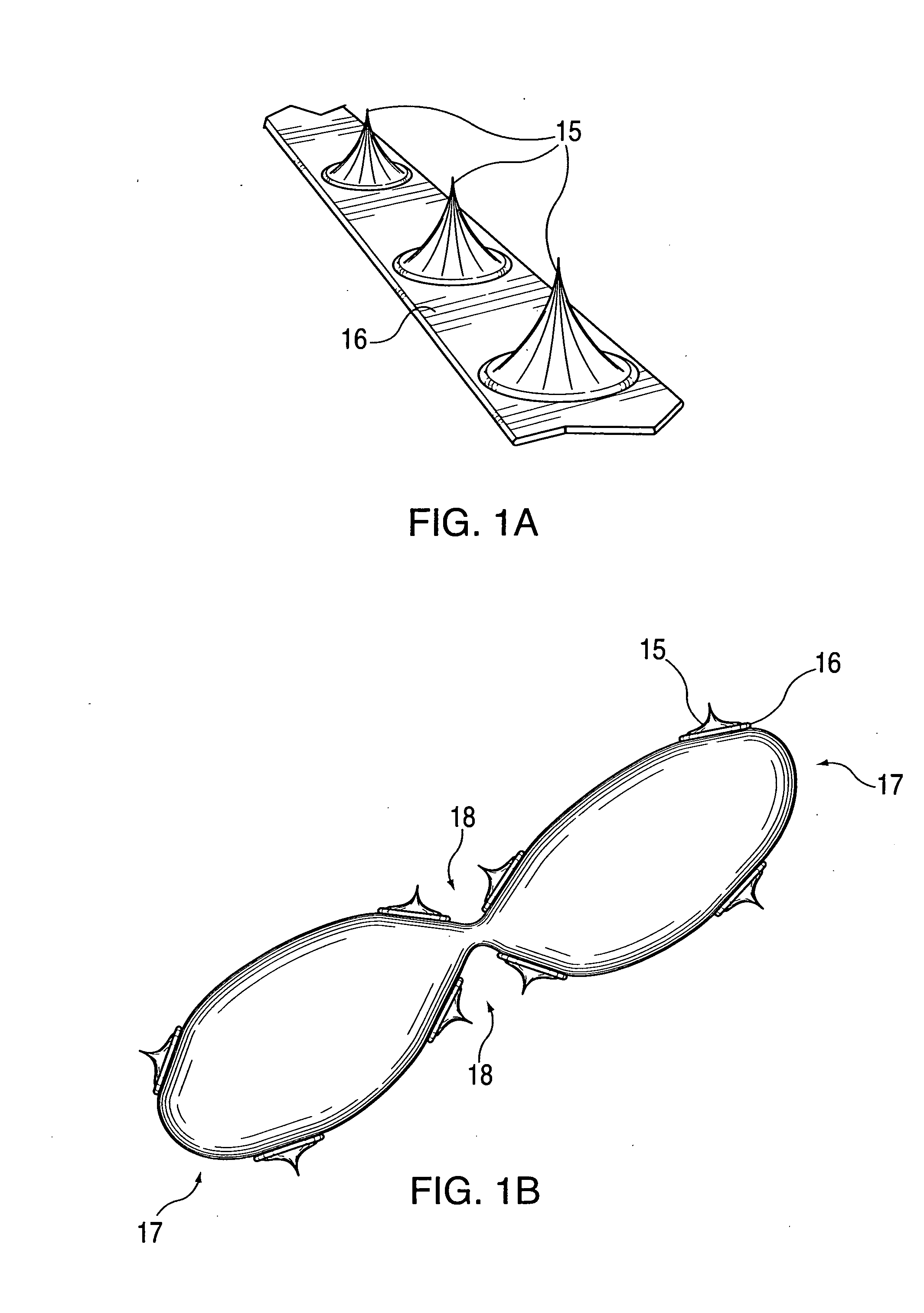Device and method for opening blood vessels by pre-angioplasty serration and dilatation of atherosclerotic plaque
a technology of atherosclerotic plaque and preangioplasty, which is applied in the field of devices and methods for opening blood vessels by preangioplasty serration and dilatation of atherosclerotic plaque, can solve the problems of heterogeneous plaque, unpredictable cleavage plane formation, plaque disruption, etc., and achieves safe and accurate dilating and stretching, reducing pressure, and reducing the effect of dilating evenly and smoothly
- Summary
- Abstract
- Description
- Claims
- Application Information
AI Technical Summary
Benefits of technology
Problems solved by technology
Method used
Image
Examples
Embodiment Construction
[0032]The conventional practice of compression of plaque by expansion pressure during balloon angioplasty, i.e., by applying a high pressure expansion force equally in all directions radially from the inside to a heterogeneous, roughly circumferential plaque structure, can produce unpredictable and inconsistent results. In typical treatment of atherosclerotic plaques, the angioplasty balloon is inflated with 4 to 8 atmospheres of pressure, and pressures up to 22 atmospheres may be required in some cases. Such high pressures can cause injury to the intima and media in the artery at the treatment location. Arterial wall injury is one of the major stimulants to intimal hyperplasia, smooth muscle cell replication and intravascular scarring causing occlusion. Plaque is heterogeneous in nature composed of varying masses of soft and hard materials, calcium and highly variable topography, and can give way along paths of least resistance. Therefore, when standard balloon angioplasty is perfo...
PUM
 Login to View More
Login to View More Abstract
Description
Claims
Application Information
 Login to View More
Login to View More - R&D
- Intellectual Property
- Life Sciences
- Materials
- Tech Scout
- Unparalleled Data Quality
- Higher Quality Content
- 60% Fewer Hallucinations
Browse by: Latest US Patents, China's latest patents, Technical Efficacy Thesaurus, Application Domain, Technology Topic, Popular Technical Reports.
© 2025 PatSnap. All rights reserved.Legal|Privacy policy|Modern Slavery Act Transparency Statement|Sitemap|About US| Contact US: help@patsnap.com



